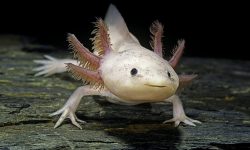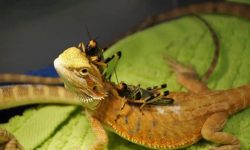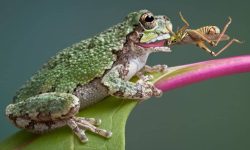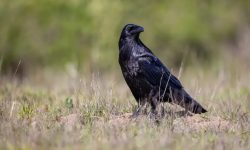Raccoons are one of the most adaptable and resourceful animals in North America. With their distinctive black “masks” and nimble paws, these nocturnal creatures have earned a reputation for curiosity and cleverness. But have you ever wondered what raccoons actually eat? The truth might surprise you.
Raccoons are omnivores, which means they eat both plants and animals. Their diet is incredibly diverse and changes based on season, location, and availability of food. Whether living deep in the forest or wandering through suburban neighborhoods, raccoons can find something to eat almost anywhere. Let’s dive into 20 surprising foods that raccoons love — and what makes their diet so fascinating.
Understanding Raccoon Feeding Habits

The Omnivorous Nature of Raccoons
Raccoons are opportunistic feeders. They don’t specialize in one type of food but instead take advantage of whatever is easiest to find. In the wild, raccoons often forage near rivers, lakes, and wooded areas where they can find small animals, aquatic life, and fruit. In cities, they might explore garbage cans, pet bowls, or compost bins. Their flexibility is a big reason why raccoons thrive in so many environments.
Seasonal and Habitat-Based Variation
A raccoon’s menu changes with the seasons. In spring and summer, they prefer protein-rich foods such as insects, crayfish, frogs, and bird eggs. As autumn approaches, raccoons turn their attention to fruits, grains, and nuts, storing fat for the colder months. In winter, when food is scarce, they rely on leftover crops, garbage, and whatever they can scavenge.
Why Understanding Their Diet Matters
Knowing what raccoons eat helps people prevent unwanted encounters. If you understand what attracts them, you can take simple steps like securing trash cans or harvesting fruit early. It also highlights their ecological role — raccoons are important seed dispersers and scavengers that help clean the environment.
20 Surprising Foods Raccoons Love
Here are 20 foods raccoons absolutely love — from natural delicacies to the snacks they steal from our backyards.
1. Crayfish
Crayfish are a raccoon’s top delicacy. These crustaceans are plentiful in streams, ponds, and marshes — all common raccoon habitats. Using their sensitive paws, raccoons feel beneath rocks and along muddy bottoms to detect crayfish movements, often catching them in a single swift motion.
Crayfish offer a rich source of protein and minerals, giving raccoons the nutrients they need for energy. Because crayfish are relatively easy to catch, especially during low water levels, they make up a large portion of the raccoon’s summer diet. Observers often spot raccoon tracks near creeks — a sure sign of their recent midnight fishing trips.
2. Frogs and Toads
Raccoons have a keen sense of hearing that helps them locate frogs and toads along the water’s edge. They quietly stalk their prey, then use their dexterous front paws to snatch these slippery amphibians before they can hop away.
Frogs and toads are nutrient-dense, offering both protein and hydration. In ecosystems with plenty of wetlands, these amphibians become a regular part of a raccoon’s diet. This hunting behavior also demonstrates the raccoon’s intelligence and patience — they often wait motionless for several minutes before striking.
3. Small Fish
When the opportunity arises, raccoons become skilled fishermen. They scoop up small fish such as minnows, perch, or sunfish from shallow waters. Sometimes, they even scavenge dead fish washed ashore or left by larger predators.
Fish provide raccoons with high-quality fats and proteins that sustain them through active nights. Raccoons living near lakes, rivers, or coastal regions often rely heavily on fish, especially during warmer months when other food sources may be less abundant.
4. Snails and Clams
Snails, clams, and other mollusks are irresistible to raccoons, especially those living near marshy or tidal areas. They pry open shells with remarkable strength, sometimes using small stones as leverage tools — a behavior rarely seen in wild mammals.
These slow-moving prey are ideal for raccoons because they require minimal energy to catch. The soft inner flesh offers a rich supply of nutrients, making mollusks a valuable food source in coastal habitats.
5. Insects and Grubs
Raccoons love to dig in soft soil to uncover insects and grubs. Beetles, caterpillars, worms, and larvae are all part of their natural menu. Their excellent sense of touch helps them detect movement underground, even in complete darkness.
For juvenile raccoons learning to forage, insects are an easy and abundant food source. These small creatures are packed with protein and moisture, helping raccoons stay hydrated and nourished during dry seasons.
6. Bird Eggs
Raccoons are infamous nest raiders. With their climbing skills and sharp senses, they can easily find bird nests in trees or shrubs. Once located, they use their nimble fingers to carefully remove and eat the eggs inside.
Bird eggs are a concentrated source of protein and fats. This opportunistic feeding habit, while natural, often puts raccoons in conflict with songbird populations. In forested regions, they’re one of the main predators of bird nests.
7. Baby Birds
If a raccoon stumbles upon an unguarded nest containing hatchlings, it may eat the young birds. Although this might sound brutal, it’s part of nature’s balance — raccoons are opportunistic feeders that take advantage of what’s available.
This behavior typically occurs during late spring and early summer when baby birds are most vulnerable. While they prefer easier meals like eggs or fruit, raccoons won’t ignore such an easy protein source.
8. Small Mammals
Raccoons occasionally hunt small mammals such as mice, voles, or young rabbits. Though not natural predators like foxes or coyotes, raccoons are capable hunters when motivated by hunger or scarcity of food.
Catching mammals provides essential calories and fats, especially during winter when plant foods are scarce. These hunts are usually short and opportunistic — raccoons rely on stealth and speed rather than long chases.
9. Nuts
Nuts like acorns, walnuts, and beechnuts are raccoon favorites, especially in the fall. They’re high in fats, which help raccoons store energy for colder months when food is harder to find.
Raccoons often bury or stash nuts in hidden locations, returning later to eat them — much like squirrels. This foraging behavior shows their impressive memory and planning abilities, essential for surviving harsh winters.
10. Berries and Wild Fruits
During summer and early autumn, raccoons feast on berries such as blackberries, raspberries, and wild grapes. These fruits are both sweet and hydrating, helping raccoons replenish energy after long nights of foraging.
Interestingly, raccoons also help spread seeds through their droppings, contributing to forest regeneration. This mutual relationship between raccoons and fruiting plants is vital to maintaining healthy woodland ecosystems.
11. Garden Vegetables
Raccoons often raid backyard gardens under the cover of darkness. They have a particular taste for tomatoes, melons, corn, and pumpkins. Once they discover a garden’s bounty, they tend to return nightly until it’s picked clean.
Garden raids can frustrate homeowners, but for raccoons, these cultivated plants are irresistible. The vegetables provide hydration and natural sugars, offering a welcome alternative to their typical wild diet.
12. Corn
Few foods tempt raccoons like ripe corn. Cornfields are magnets for these clever mammals, especially right before harvest when the kernels are sweetest. Farmers often find evidence of raccoon visits — partially eaten cobs or trampled stalks.
Corn provides quick energy through its natural carbohydrates. It’s also easy to access for raccoons, who can climb and pull down stalks using their strong front paws. This makes it a seasonal favorite.
13. Pet Food
Outdoor pet bowls are one of the biggest attractants for raccoons. Cat and dog kibble is high in protein and fat, making it a perfect substitute for their natural diet. Once raccoons find a source, they’ll return regularly at night.
This behavior often leads to human-wildlife encounters. Homeowners are advised to bring pet food indoors after dark to avoid unwanted visitors. Raccoons are persistent and can even remember feeding spots months later.
14. Human Leftovers
Raccoons are world-class scavengers. They’ll dig through garbage cans for pizza crusts, burger wrappers, or discarded candy. Their strong sense of smell helps them locate food from surprising distances.
Urban raccoons have adapted incredibly well to living around people. They can open lids, undo latches, and even tip over bins to reach leftovers. Unfortunately, this habit often gives them a mischievous reputation in city neighborhoods.
15. Carrion
Raccoons don’t waste food. If they come across a dead animal, they’ll scavenge it. This helps recycle nutrients in the ecosystem and keeps the environment cleaner.
Carrion eating also benefits raccoons during lean seasons when fresh prey is scarce. Their strong stomachs and adaptable immune systems allow them to digest decaying meat without getting sick.
16. Fallen or Frozen Fruit
Raccoons are resourceful, especially in winter. They often eat fallen apples, pears, or other fruits that remain on the ground or have frozen overnight. These sugary treats give them an energy boost when other foods are unavailable.
Even in cold climates, raccoons’ persistence pays off. They may dig through snow or leaf litter to uncover frozen fruit, showing just how adaptable they are in finding nutrition throughout the year.
17. Pumpkins
Pumpkins are both seasonal decoration and raccoon delight. During fall, these nocturnal foragers chew through pumpkin rinds to reach the soft, sweet flesh inside. The seeds also provide valuable fats.
Homeowners often find half-eaten pumpkins on their porches after Halloween. To raccoons, it’s a ready-made feast — nature’s dessert served in a sturdy orange shell.
18. Shellfish
Coastal raccoons enjoy access to shellfish like crabs, oysters, and mussels. Their dexterous hands allow them to pry open shells with impressive skill. They usually hunt along tidal flats during low tide, where shellfish are exposed.
These high-protein meals help sustain raccoons living near saltwater environments. Their ability to adapt their diet based on habitat shows just how versatile these mammals are.
19. Roots and Tubers
Raccoons sometimes dig up roots, bulbs, and tubers, particularly when other food sources run low. They use their sharp claws to excavate the soil and extract underground plants like wild carrots or yams.
Although these foods aren’t their first choice, they provide carbohydrates that help raccoons maintain energy. This fallback strategy demonstrates their impressive survival instincts.
20. Processed or Sugary Foods
Raccoons have developed a surprising sweet tooth. In urban areas, they often steal donuts, cookies, or even ice cream from open trash bins or outdoor tables. Their adaptability to human environments has expanded their diet far beyond the wild.
While these processed foods can cause digestive problems, raccoons’ curiosity makes them hard to resist. Their love for sugary snacks is a testament to how closely they’ve learned to live alongside humans — and how much they enjoy the occasional junk food treat.
Why These Foods Matter
Efficiency and Convenience
Raccoons are strategic feeders. They choose foods that are both high in nutrition and easy to obtain. This explains why they frequent garbage bins and pet bowls — the reward outweighs the effort.
Seasonal Adaptation
Raccoons adjust their diet throughout the year. In warmer months, they consume fresh fruits, insects, and amphibians. In cooler seasons, they rely on nuts and leftovers. Their ability to shift diets keeps them thriving year-round.
Urban Survival Skills
Raccoons have learned to live alongside humans. Urban areas offer endless food opportunities — trash cans, gardens, and bird feeders. This adaptability makes them successful but also brings them closer to human conflict.
Ecological Role
By eating fruits and nuts, raccoons spread seeds across landscapes. Their scavenging helps clean up carcasses and waste, contributing to ecosystem balance. They may cause nuisance, but they also play an important natural role.
Living With Raccoons: Tips for Homeowners
Protecting Your Garden
To keep raccoons away, harvest ripe fruits quickly, use motion-activated lights, and install fencing. Cover compost piles and avoid leaving food scraps outdoors. Small changes can prevent nightly raids.
Securing Trash and Pet Food
Always use raccoon-proof trash bins with tight lids. Bring pet food inside after dark. Raccoons have incredible dexterity and can open loose containers easily.
Avoid Feeding Wildlife
Feeding raccoons intentionally can cause long-term problems. They may lose their fear of humans, damage property, or spread diseases like rabies. It’s best to let them find food naturally.
Safe Observation
If raccoons visit your yard, enjoy watching them from a distance. Avoid interaction or attempts to trap them yourself. Call local wildlife services if they become a persistent problem.
FAQs About Raccoon Diets
Do raccoons wash their food?
The famous “washing” behavior isn’t really about hygiene. In the wild, raccoons dip food in water because it enhances their sense of touch, helping them detect prey or remove debris.
Are raccoons nocturnal?
Yes, raccoons are mainly nocturnal. They prefer foraging under the cover of darkness to avoid predators and humans. However, you may occasionally see them during the day in safe or food-rich areas.
Can I safely feed raccoons?
It’s not recommended. Feeding raccoons encourages dependency on humans and increases the risk of property damage and disease spread. Wildlife experts strongly advise against it.
How can I stop raccoons from raiding my trash?
Use heavy-duty containers with locking lids. Store trash indoors or in secure bins until collection day. Sprinkling ammonia or vinegar near trash cans can also deter them.
What foods are bad for raccoons?
Processed foods, sweets, and salty snacks are harmful. These items can cause digestive problems and malnutrition. Raccoons are best left to their natural, balanced diet.
Conclusion
Raccoons are remarkable survivors. Their diet, which ranges from crayfish and fruits to pet food and leftovers, shows just how adaptable they are. This flexibility allows them to thrive in forests, farmlands, and even bustling cities.
While raccoons’ curiosity can lead to mischief in our trash or gardens, it’s part of their natural drive to find food wherever they can. By understanding what raccoons eat, we can take steps to protect our homes and coexist peacefully with these intelligent creatures.
Next time you spot a raccoon prowling at night, remember — it’s just searching for its next meal in a world full of surprises.






